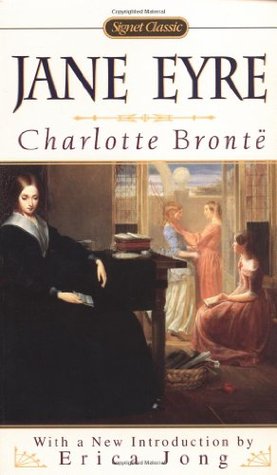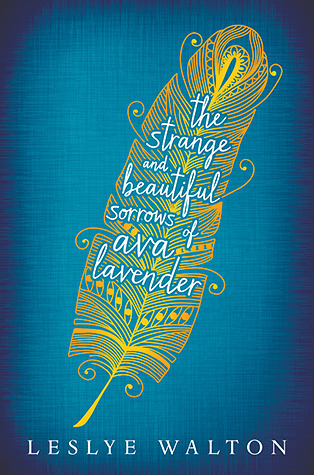Love may very well be the most profound emotion we’ll ever experience. Whether platonic or romantic, fleeting or lifelong, love has the power to nurture meaningful relationships, shatter our hearts, teach important lessons, and change lives forever. So it’s no wonder that love is one of the most frequently delved-into themes in literature. It defies boundaries by appearing across all genres, age groups, and periods in history. And like in real life, the presence of love can make a story acutely heartfelt and memorable, regardless of the outcome.
So how do novels explore love as a literary theme? Let’s answer that question in today’s Theme: A Story’s Soul post. We’ll take two books from different genres, study them briefly, and find some common techniques and important elements to use in our own “love stories.”
 Love as a Theme in Charlotte Brontë’s Jane Eyre (Fiction)
Love as a Theme in Charlotte Brontë’s Jane Eyre (Fiction)
Charlotte Brontë’s Jane Eyre is the classic tale of one woman’s journey to overcome her traumatic childhood and forge her own identity. While the novel is most famous for its controversial romance between governess Jane and her employer Mr. Rochester, it also illustrates other types of love (including a lack of love) through Jane’s relationships with other characters.
An orphan, Jane is raised at Gateshead Hall, where she is abused physically and emotionally by her aunt, Mrs. Reed. Jane recognizes, however, that she deserves to be treated with love and respect, and demonstrates this awareness by lavishing affection on a doll that’s “shabby as a miniature scarecrow” (28) and relishing the kindness of Bessie, one of Gateshead’s servants. Years later, she returns to Gateshead at her aunt’s bidding. It’s during this final visit, at Mrs. Reed’s deathbed, that Jane tells her, “Many a time, as a little child, I should have been glad to love you if you would have let me; and I long earnestly to be reconciled to you now….” (243). Instead of being vindictive, Jane shows love to Mrs. Reed through forgiveness, even though she knows she might not receive love in return.
Jane’s desire for love also shapes her adult relationships and perspective on marriage. When she realizes Mr. Rochester might marry for social status instead of love, she thinks, “[W]ere I a gentleman like him, I would take to my bosom only such a wife as I could love” (190). In other words, Jane is aware that people of higher social classes place greater value on status and wealth, but she still can’t fathom why someone wouldn’t marry for love.
Then again, Jane’s own feelings for Mr. Rochester may be complicating her views. She reminds herself several times that, even if he loved her, he would never show it because of her lower social position, among other reasons. Regardless, she thinks, “‘I must, then, repeat continually that we are for ever sundered:—and yet, while I breathe and think I must love him’” (178). Despite the obstacles keeping them apart, Jane can’t shake her affection for Mr. Rochester – even after fleeing because of a terrible secret she learns about him.
Later, Jane meets St. John Rivers, a pastor grappling with his reasons for choosing a wife. He admits to loving a woman named Rosamond “‘with all the intensity, indeed, of a first passion, the object of which is exquisitely beautiful, graceful, fascinating’” (380), but believes she won’t make a good wife. So when St. John asks Jane to marry him and accompany him on his missionary work in India, he clarifies that it won’t be a marriage of love: “‘I claim you – not for my pleasure, but for my Sovereign’s service’” (409). It’s the kind of marriage that Jane opposes, and she vehemently refuses St. John, leaving soon after to return to Mr. Rochester, whom she realizes she still loves.
 Love as a Theme in Leslye Walton’s The Strange and Beautiful Sorrows of Ava Lavender (YA Magical Realism)
Love as a Theme in Leslye Walton’s The Strange and Beautiful Sorrows of Ava Lavender (YA Magical Realism)
In Leslye Walton’s The Strange and Beautiful Sorrows of Ava Lavender, the titular main character narrates a multi-generational tale of the Roux family, focusing on her grandmother Emilienne, her mother Viviane, and Ava herself. The book interweaves supernatural life events (Ava, for example, is born with wings) with more down-to-earth tragedies and romances. Thus, love naturally emerges as one of its themes.
One of Ava Lavender’s most memorable quotes is “Love makes us such fools” (13). Emilienne speaks it first when she’s 13 years old, to justify a bold move to help her then-crush. The saying bears more meaning as the book continues and more of the Roux family relationships prove ill-fated. For example, passionate romance leads to death for two of Emilienne’s siblings. Her baby sister Pierette, on the other hand, sacrifices everything for unrequited love by changing herself permanently into a canary to try to gain a bird-watcher’s affections (14). Ava’s mother Viviane spends years pining for Ava’s birth father, oblivious to the love her housemate Gabe shows her through household repairs and helping her raise her children.
Sometimes the theme of love is paired with marriage, though in bittersweet ways. Emilienne marries Connor Lavender because she figures “a loveless union was the best option for each of them” (29). Her past heartaches taught her to be wary of love; and by marrying a man she doesn’t love, she believes she’ll avoid future grief or loneliness if something were to happen to him. Likewise, Ava’s birth father Jack proposes to his college sweetheart Laura Lovelorn instead of Ava’s mother. Years later, Laura realizes she loved her husband so much she’d spent all that time “in a love-induced fog, believing that Jack was happy with the life they’d created together and, more significant, that he loved her” (271). Laura’s love for Jack blinded her to his unhappiness, which was undoubtedly caused by him not marrying the woman he truly loved.
On a more uplifting note, Emilienne’s friend Wilhelmina Dovetail speaks an unquestionable truth when she says, “‘[L]ove comes in all sorts of packages’” (240). Ava’s family is a shining example of this. It consists of blood relations (mother Viviane, twin brother Henry, and grandmother Emilienne) as well as “chosen family members” Wilhelmina and Gabe, whom Ava initially assumes is her father, since “Why else would he have stayed so long?” (136) Later, her circle grows to include her best friend Cardigan and her first love Rowe, who treats Ava like a normal girl regardless of her wings. Even when Rowe is away at college while Ava recovers from a grievous injury, he writes letters to her constantly, encouraging her to heal and reassuring her that he still cares (“I loved you before, Ava. Let me love you still”) (292).
Keys to Exploring Love as a Literary Theme
Love really is a complex theme to examine, and we could have studied plenty more excerpts from Jane Eyre and Ava Lavender. But based on the few quotes above, you may have noticed the following techniques and elements that these books have in common:
- Love and Its Challenges: Highlighting love as a theme often indicates that characters will experience challenges in their relationships that they must overcome. For Jane, this means rising above the abuse she endured from her aunt and overcoming trust and social obstacles in her romance with Mr. Rochester. For the characters in Ava Lavender, it means learning to continue believing in love despite unreturned affections (Gabe), sexual violence (Ava), and similar heartaches.
- Mirrors of Love: Mirror characters – or, in this case, mirror relationships – can be an excellent technique for showing love at work. Both Jane Eyre and Ava Lavender are teeming with examples of characters who deeply love one another (Jane and Mr. Rochester, Viviane and Jack) and others whose relationships suffer from the absence of love (Jane and Mrs. Reed, Emilienne and Connor).
- “Love Can Make Us Such Fools”: As the Ava Lavender quote implies, love can sometimes blind a person to logic or reality and influence them to make poor decisions. Despite her careful reasoning, Jane surrenders to her feelings for Mr. Rochester – and fails to connect the strange happenings at Thornfield Hall with Mr. Rochester’s past before the truth is thrust upon her.
- “All Sorts of Packages”: Romantic love isn’t the only kind of love that’s explored in both novels. They also touch on kindness, compassion, and forgiveness, all of which are platonic forms of love.
- “Marriage” with Other Themes: In addition to love, Jane Eyre and Ava Lavender examine themes such as marriage, family, desire, and friendship. This thematic web makes sense, since love is often connected to these topics in real life.
It’s Your Turn!
- What books have you read that demonstrate love as a literary theme? How did they accomplish this?
- Write a story where the protagonist struggles with love (either romantic or platonic) while working toward her story goal. What is the cause of her challenge with love and/or this particular relationship? How can the story’s events help her overcome this challenge?
- What have you learned about love through your real-life relationships and/or the relationships of the people closest to you (parents, grandparents, siblings, friends, etc.)?
What topics would you like to see featured at Theme: A Story’s Soul? Share your thoughts by commenting below or tweeting me at @SaraL_Writer with the hashtag #DIYMFA.
 Sara Letourneau is a speculative fiction writer and poet in Massachusetts who devours good books, loves all kinds of music, and drinks copious amounts of tea. In addition to writing for DIY MFA, she is a Resident Writing Coach at Writers Helping Writers and is hard at work on a YA magical realism novel. She also freelanced as a tea reviewer and music journalist in the past. Her poetry has appeared in The Curry Arts Journal, Soul-Lit, The Eunoia Review, Underground Voices, and two print anthologies. Visit Sara at her personal blog, Twitter, and Goodreads.
Sara Letourneau is a speculative fiction writer and poet in Massachusetts who devours good books, loves all kinds of music, and drinks copious amounts of tea. In addition to writing for DIY MFA, she is a Resident Writing Coach at Writers Helping Writers and is hard at work on a YA magical realism novel. She also freelanced as a tea reviewer and music journalist in the past. Her poetry has appeared in The Curry Arts Journal, Soul-Lit, The Eunoia Review, Underground Voices, and two print anthologies. Visit Sara at her personal blog, Twitter, and Goodreads.







